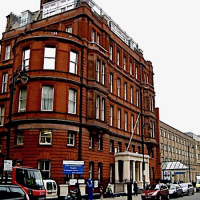Birthmarks
Dr Nicola Clayton - Dermatology
Created on: 07-22-2019
Updated on: 11-10-2023
Edited by: Carlota Pano
What is a birthmark?
A birthmark is a coloured mark that is visible on the skin, which can vary in size and colour. It often appears at birth or develops soon afterwards.
A birthmark will either fade or get bigger over time and be permanent. It may appear anywhere on the body or face and is completely harmless in most cases.
What are the different types of birthmarks?
There are two main types of birthmarks:
1. Vascular birthmarks
These are often red, purple or pink and are caused by abnormal blood vessels in or under the skin. They are likely to be found in the head and neck area, and mostly on the face.
The most common types of vascular birthmarks include:
- Salmon patches – flat red or pink patches on a baby’s eyelids, neck or forehead at birth. These are the most common type to occur in around half of all babies.
- Infantile haemangioma or ‘strawberry marks’ – raised marks on the skin that are usually red. These are particularly common in girls. They increase in size for the first six months and eventually shrink and disappear by age seven.
- Capillary malformation or ‘port-wine stain’ – flat red or purple marks that affect a small number of newborn babies. They are sensitive to hormones and may become more prominent during puberty, pregnancy, and the menopause. Most are permanent.
2. Pigmented birthmarks
These are usually brown and caused by clusters of pigment cells.
Some of the most common types of pigmented birthmarks include:
- Café-au-lait spots – coffee-coloured skin patches. It is normal to have one or two but if they keep developing by the time your child is five, it could be an underlying sign of neurofibromatosis. You should have these checked by a doctor.
- Mongolian spots – blue-grey or bruised-looking birthmarks. They are more likely to appear on the lower back or buttocks and may last for months or years, but they usually disappear by the time a child turns four years old.
- Congenital melanocytic naevi or ‘congenital moles’ – relatively large brown or black moles. They become less obvious with time, but may become darker during puberty. The risk of it developing into skin cancer is low, but it can still increase in size.

What causes birthmarks?
The underlying reason for the formation of a birthmark is unknown. Very occasionally, gene mutation may be a cause - for example, a rare condition called Sturge-Weber syndrome appears as port-wine birthmarks.
Birthmarks do not run in families, cannot be prevented, and are not hereditary.
Are birthmarks dangerous?
Most birthmarks do not require removal. Some may lead to an increased risk for certain medical conditions, such as skin cancer, and should be monitored by a dermatologist.
How are birthmarks removed?
Treatment depends on which type of birthmark that the child has. Techniques for removing birthmarks can include laser therapy, which can significantly lighten and make some birthmarks less visible. The laser targets the abnormal blood vessels and breaks them up into tiny fragments that the body’s immune system will naturally dispose of.
Some birthmarks may be removed via surgery. These include strawberry marks and large moles. During the surgical procedure, the dermatologist uses a scalpel to remove the birthmark. Larger birthmarks may require several appointments and are removed section by section.





